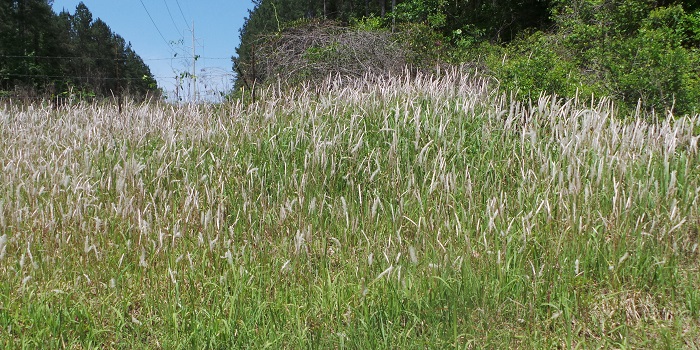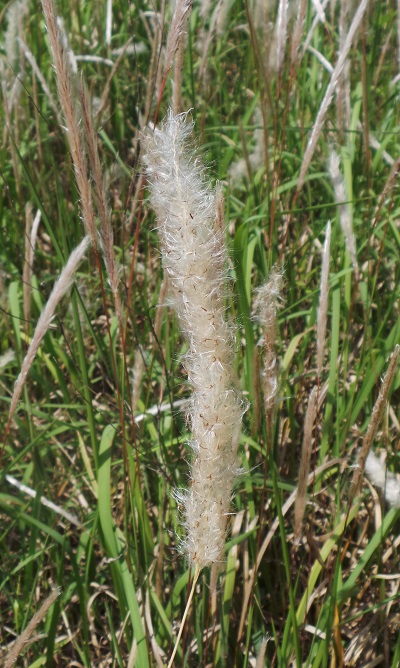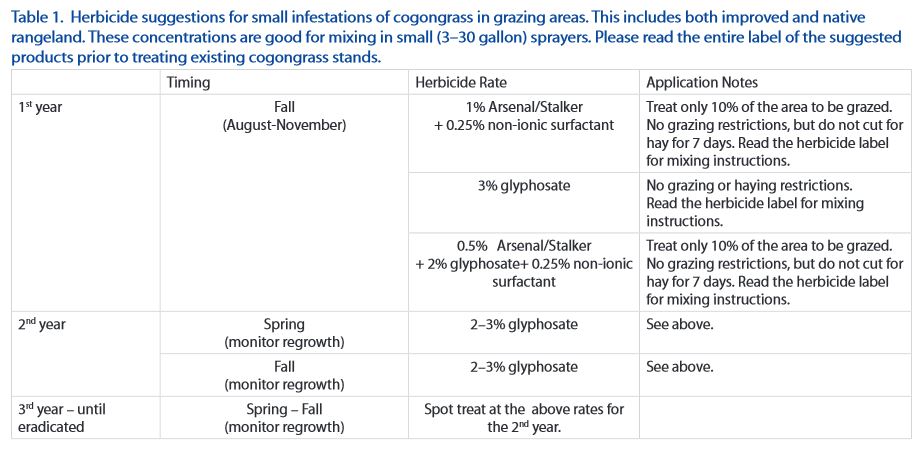We are well into spring and a wide variety of plants are showing off their colorful blooms. As lovely as most of the blooms are, some springtime colors are an unwelcome sight. Such is the case with the showy, white seedhead that is produced by Cogongrass (Imperata cylindrica). The presence of Cogongrass – a highly aggressive, invasive, perennial – in Florida is not news; it has been in Florida since at least the 1930’s. However, the white seedhead that it produces in the spring makes it easier to locate and identify. When the seedhead is not present, the somewhat boring looking grass has the ability to blend in with its surroundings. This makes it harder for un-expecting landowners to identify the new, small infestations which are much easier to eliminate than larger, well established infestations.
Controlling cogongrass is not easy but it is necessary. If left uncontrolled cogongrass will continue to aggressively spread, displacing other desirable vegetation. Generally speaking, control is a multi-year process. Because the specific recommendations for controlling cogongrass can vary somewhat by situation, it is highly advisable that you contact a UF/IFAS Extension Agent in your county if you suspect that you have cogongrass on your property.
The following description of cogongrass should help you identify cogongrass, even if the seedheads are gone:
“Cogongrass is a perennial grass that varies greatly in appearance. The leaves appear light green, with older leaves becoming orange-brown in color. In areas with killing frosts, the leaves will turn light brown during winter months and present a substantial fire hazard. Cogongrass grows in loose to compact bunches, each ‘bunch’ containing several leaves arising from a central area along a rhizome. The leaves originate directly from ground level and range from one to four feet in length. Each leaf is 1/2 to 3/4 of an inch wide with a prominent, off-center, white mid-rib. The leaf margins are finely serrated; contributing to the undesirable forage qualities of this grass. Seed production predominately occurs in the spring, with long, fluffy-white seedheads. Mowing, burning or fertilization can also induce sporadic seedhead formation. Seeds are extremely small and attached to a plume of long hairs.” UF/IFAS Center for Aquatic and Invasive Plants
This is the time of year when cogongrass is the easiest to identify. Take advantage of this opportunity to locate new infestations and work with your county agent to develop a control plan. Once a plan is in place, follow it to the end. Stopping after the first year will practically ensure that control will not be achieved.
Spot Treatment Control Options
More information on cogongrass can be found by following the links below
-
Cogongrass Biology, Ecology, and Management in Florida Grazing Lands
-
National Invasive Species Information Center
-
UF/IFAS Extension Solutions – Cogongrass
- Peanut Maturity Update – 10/9/25 - October 10, 2025
- Fall Can be a Great Time for Vegetation Management - October 3, 2025
- Peanut Maturity Update – 9/25/25 Edition - September 26, 2025




